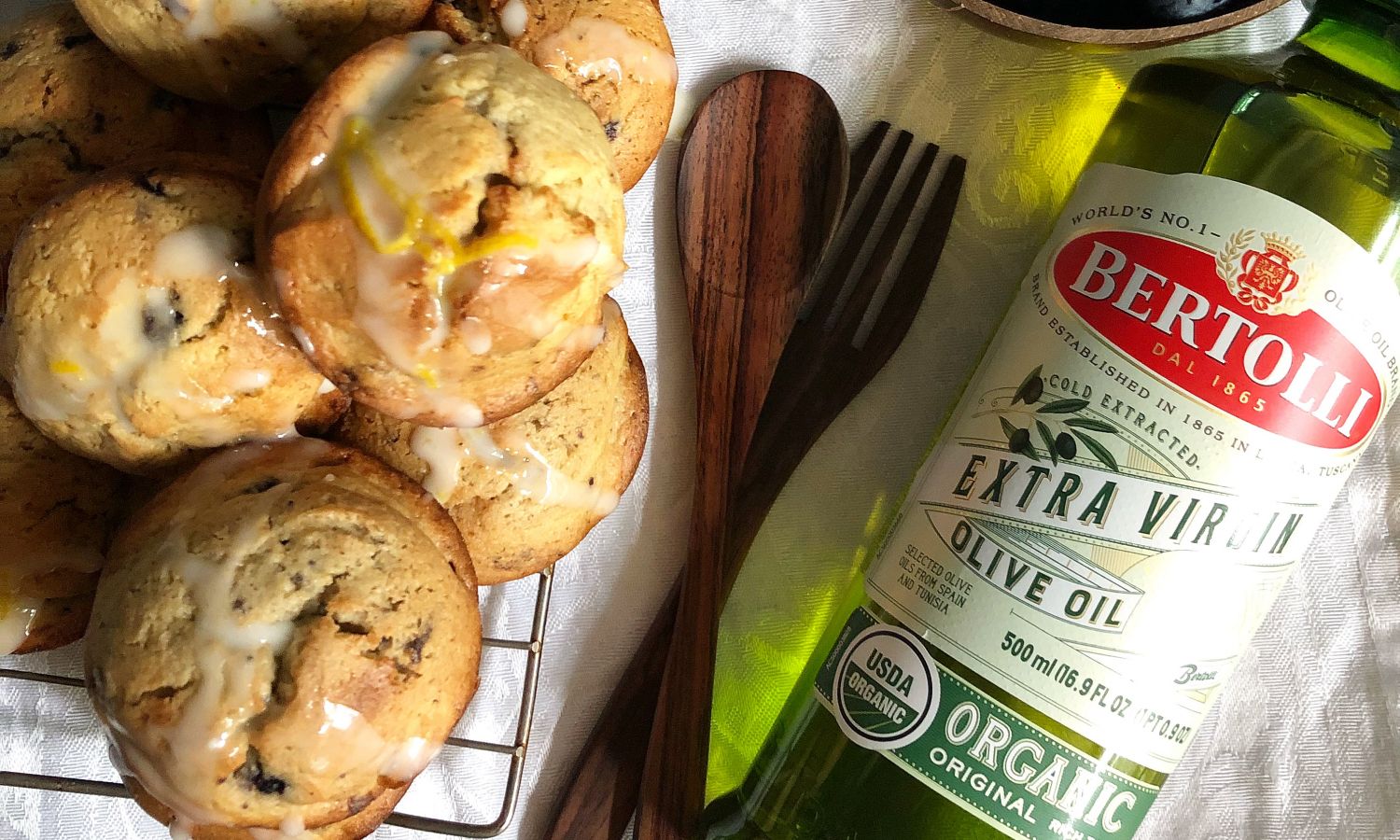
3 Easy Olive Oil Swaps for Healthier Recipes
It’s not uncommon to make a recipe healthier by substituting ingredients, and—in many cases—olive oil is perfect for that task. With no cholesterol and lower saturated fat content, it serves as a good fat to add to a dish. But remember, not all olive oils are created equal. Low-quality olive oil, which can usually be indicated by a low price, won’t provide you with the flavor you need or the health benefits you want. It may also degrade faster. Bertolli’s olive oils—including extra virgin, mild and light tasting—are prime recipe swap ingredients.
“When it comes to cooking and baking, olive oil is always my go-to!” shares Danielle Aran, MS, RD. “It adds a wonderful but subtle flavor to dishes, stands up well to heat due to its monounsaturated fatty acid and phenol content, and when used in place of saturated fats like butter, can help to lower ‘bad’ or LDL-cholesterol levels.”
Pro tip: Before using, sniff the oil to confirm that it’s not rancid. How will you know? If your nose recognizes a waxy, crayon-like scent, there’s a good chance the olive oil has gone bad and it’s time for a new bottle.
When substituting in olive oil, keep in mind that the measurements may change from the recipe’s original ingredient. Below, we’ve rounded up three easy ways to make those swaps.
Swap 1: Butter
High-quality extra virgin olive oil is a great substitute for melted butter when stovetop cooking or baking. Olive oil is lower in saturated fat than butter and contains beneficial antioxidants. If you want the bright, fruity flavor of olive oil to stand out in your dish, try extra virgin olive oil when frying eggs or sautéing vegetables. If you’d prefer a subtler olive oil taste when baking, opt for a lighter olive oil, such as Bertolli’s Extra Light Tasting Olive Oil.
When converting recipes, keep in mind that you need less olive oil than what the instructions call for with butter. A good rule of thumb is substituting 3/4 of the amount needed for butter with olive oil. “I would avoid recipes that call for creaming butter with sugar, like some cakes and cookies,” explains Aran. “The creaming process gives those baked goods a light and airy texture, and it won’t be the same if replaced by oil.” Muffins and brownies are great candidates for an olive oil swap.
1 stick of butter = 6 tablespoons of olive oil
Swap 2: Eggs
Need to make a recipe vegan or safe for someone with egg allergies? Consider swapping the egg in a recipe for olive oil. If your recipe calls for multiple eggs (or if it’s an egg-based recipe, like an omelet or frittata) it may not make sense to substitute olive oil for the full portion, since eggs help hold a recipe together while also adding height and texture. If you try swapping out multiple eggs, it will affect the consistency of your final product. However, if you’re baking a recipe that only requires one egg, olive oil is a good swap in most instances.
1 egg = ¼ cup of olive oil
Swap 3: Other Oils
Have a recipe that calls for a vegetable oil such as canola, corn, sunflower, soybean or peanut oil? Use olive oil instead! Vegetable oils come from seeds, whereas olive oil comes straight from pressed olives, so the olive oil process is simpler than extracting vegetable oil. By using olive oil as a substitute for cooking, you’re avoiding unhealthy polyunsaturated fats, which can be unstable when heated, and instead enjoying the health benefits extra virgin olive oil provides. When swapping, use the same amount that a recipe calls for—it’s a one-to-one substitute.
1 cup of vegetable oil = 1 cup of olive oil
Now that you’re familiar with olive oil swaps, it’s time to get familiar with olive oil varieties. When should you use extra virgin olive oil and when would mild olive oil be the better pick? We’ve got all the details on which olive oil you should be using here.


